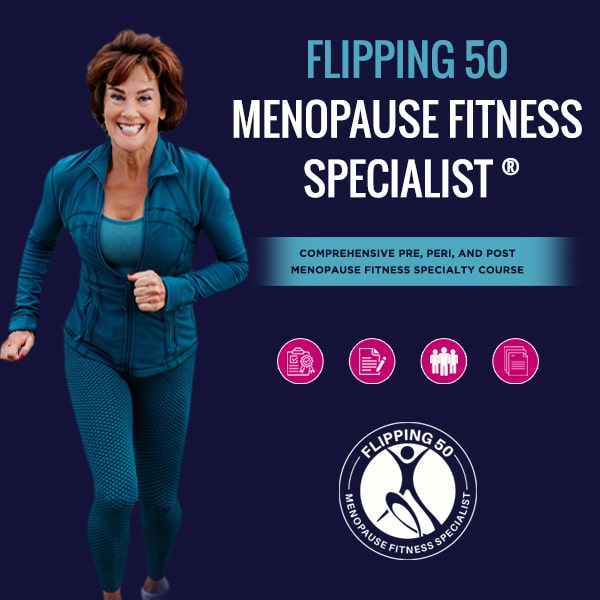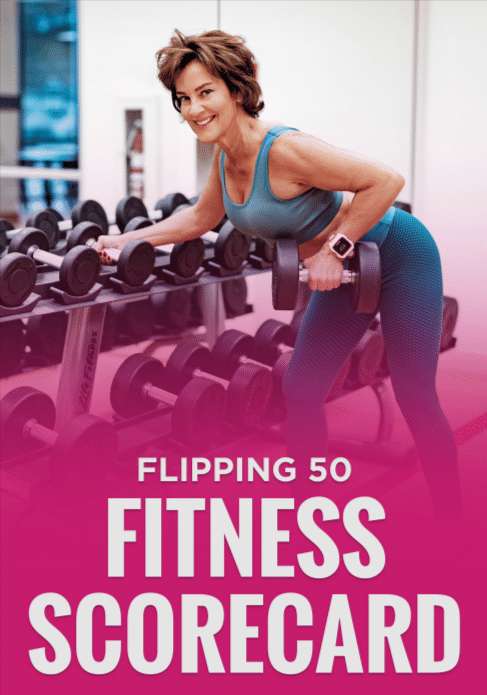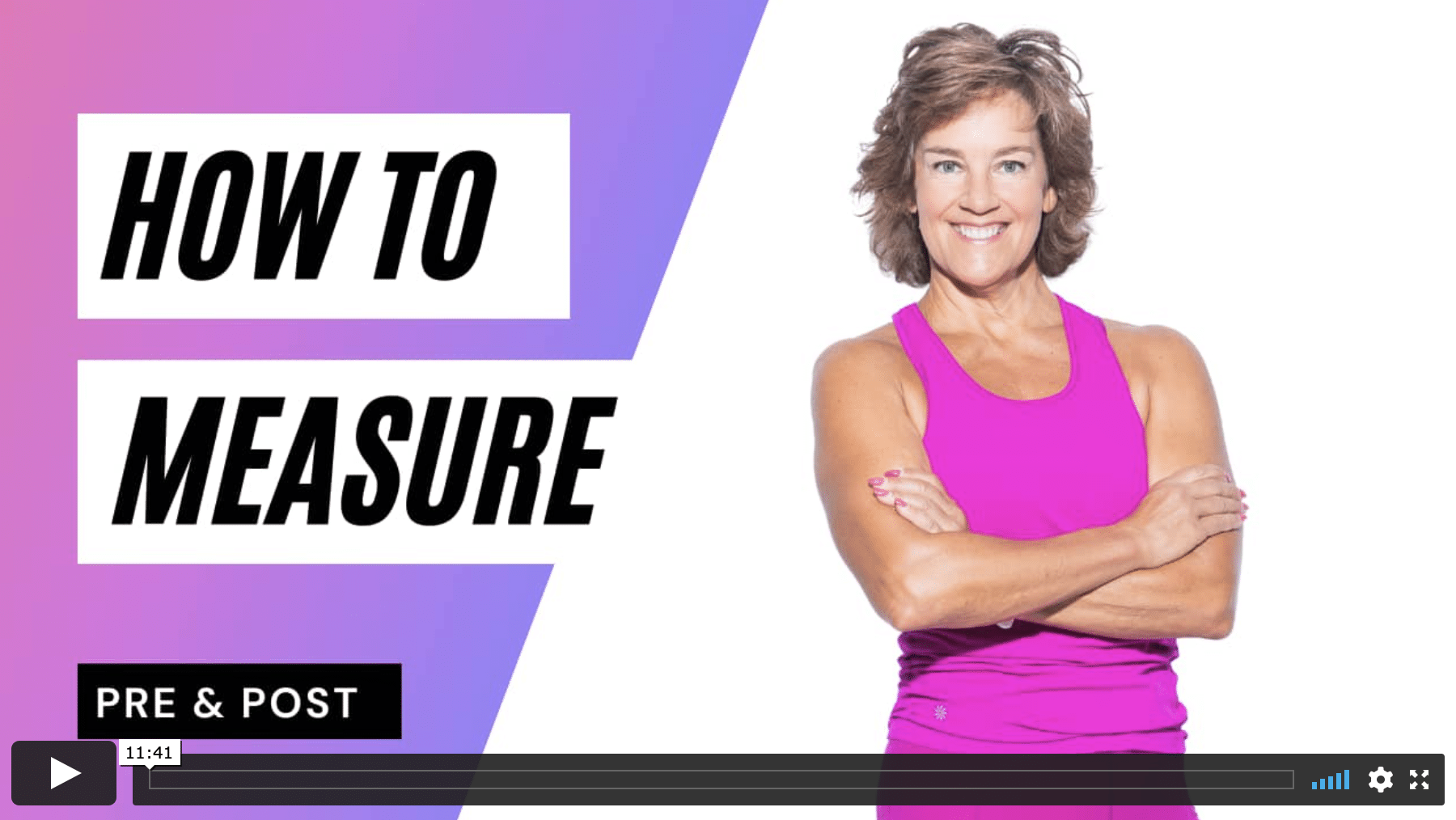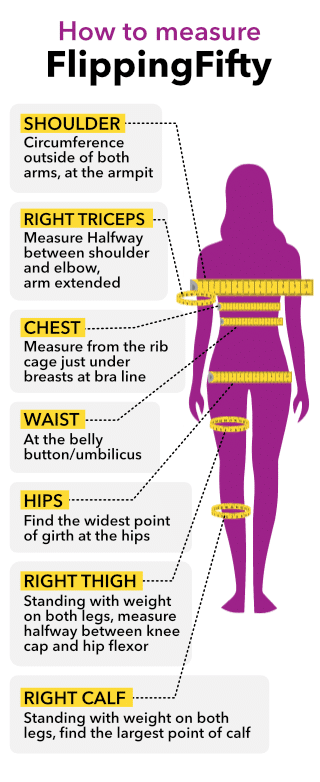If you are exercising but not losing weight or gaining muscle after 50, there are some easy and yet not-so-obvious reasons why.
This is for all of you exercising but not getting results.
Whether you or women you work with are interested in gaining muscle after 50, you may like this:
How to Design Strength Programs that Work PRE, peri and post-menopause is a new workshop I’m offering complimentary to our members and existing Menopause Fitness Specialists. If you’re interested as a non-member, add your name here to the notifications list.
5 Reasons You May Struggle Losing Fat or Gaining Muscle After 50
1. Not Working To Muscular Fatigue
- Starting out: 5-6 reps to fatigue
- Experienced – 2 reps from reserve
Workouts to gain muscle strength:
- Light – in between 6-30 reps
- Moderate – +/- 15 reps
- Heavy – 10 or fewer reps
2. Too Little Recovery
3 things that have to recover: Muscle, Connective tissues, Adrenals
- Muscle
48 hours of recovery is not enough for a lot of people. As we age, we need more recovery time.
If you take too little recovery time, you will feed more tired than better and not gain lean muscle mass.
- Connective tissues (ligaments & joints)
Recovery may be slower and healing from an injury or a strain.
Take time with warm ups and cool downs. Work on mobility around key joints like ankles, hips and shoulders regularly.
- Adrenals
Prolonged elevated cortisol after a workout is problematic if already chronic elevation of cortisol exists.
Estrogen regulates the HPA-axis (cortisol/adrenal signaling) function. Less estrogen reduces the ability to regulate stressors.
Decreasing exercise, reducing inflammation and taxing of the adrenals, improving sleep, nutrition sufficiency, and identifying ways to reduce negative effects of cortisol with tools that work for you.
More Reasons Why You’re Not Gaining Muscle After 50
3. Too Few Calories Or Protein
May limit muscle protein synthesis.
If you’re in a caloric deficit:
- a moderate deficit (<500 calories below maintenance)
- resistance training
- high protein intake
Can help preserve muscle during fat loss.
BUT for muscle growth, a calorie surplus is usually necessary.
An 8-week study on heavy resistance training performed in a split routine (with young adults) suggested a much higher protein intake successfully improved fat loss with resistance training in active adults. That was 3.4g protein / kg body weight. For me doing that math at 130lbs would mean an intake of 200g of protein.
A recent study pointed out that for muscle strength older adults need adequate protein, and for mass, adequate micronutrient density.
4. Too Little Sleep
Inadequate sleep can lead to a decrease in muscle strength in the post-night session .
Sleep, post-exercise recovery and athletic performance seem to be significantly related and it appears that vigorous exercise can intensify the negative relationship between sleep deprivation and recovery.
5. Not Enough Quality Volume
POST menopause requires more volume than PRE menopause for adequate stimulus.
Post-menopause recommendations are 6-8 sets of exercise for any one muscle group per week.
PRE menopause:
- Per day: 3 to 4 sets per 8 major muscle group
- Per week: 48 to 64 sets total, spread out in 2 (or 3) workouts.
These work before estrogen and other hormonal declines have occurred.
POST menopause:
- Per day: 6 to 8 sets per 8 major muscle group
- Per week: 77 to 144 sets total, spread out in 2 (or 3) workouts.
That is a wide range but researchers suggested more is needed. More research is needed to determine if this is really true. More importantly, you should test it to see if it’s true for you.
References for Gaining Muscle After 50:
- Sports Medicine, 2024, PMID: 38970765.
- Seattle Midlife Women’s Health Study. Menopause, 2009, PMID: 19322116.
- The Journal of Clinical Endocrinology and Metabolism, 2017, PMID: 29106594.
- International Journal of Sport Nutrition and Exercise Metabolism, 2022, PMID: 34697259.
- Journal of the International Society of Sports Nutrition, 2015, PMID: 26500462.
- Biology of Sport, 2021, PMID: 33795917.
- BMC Women’s Health, 2023, PMID: 37803287.
Other Episodes You Might Like:
- Previous Episode – What to Do When Joints Hurt, Ache or Need Replaced? A Doctor Viewpoint
- Next Episode – You’re Not Really Bloated!
- More Like This – Extended Cardio and Low Protein Equal Short Term Weight Loss
Resources:
- Don’t know where to start? Book your Discovery Call with Debra.
- Understand how sleep relates to your hormones, muscle mass and weight loss with Flipping 50 Sleep Yourself Strong.
- Learn how to Design Strength Programs that work pre, peri and post-menopause.








